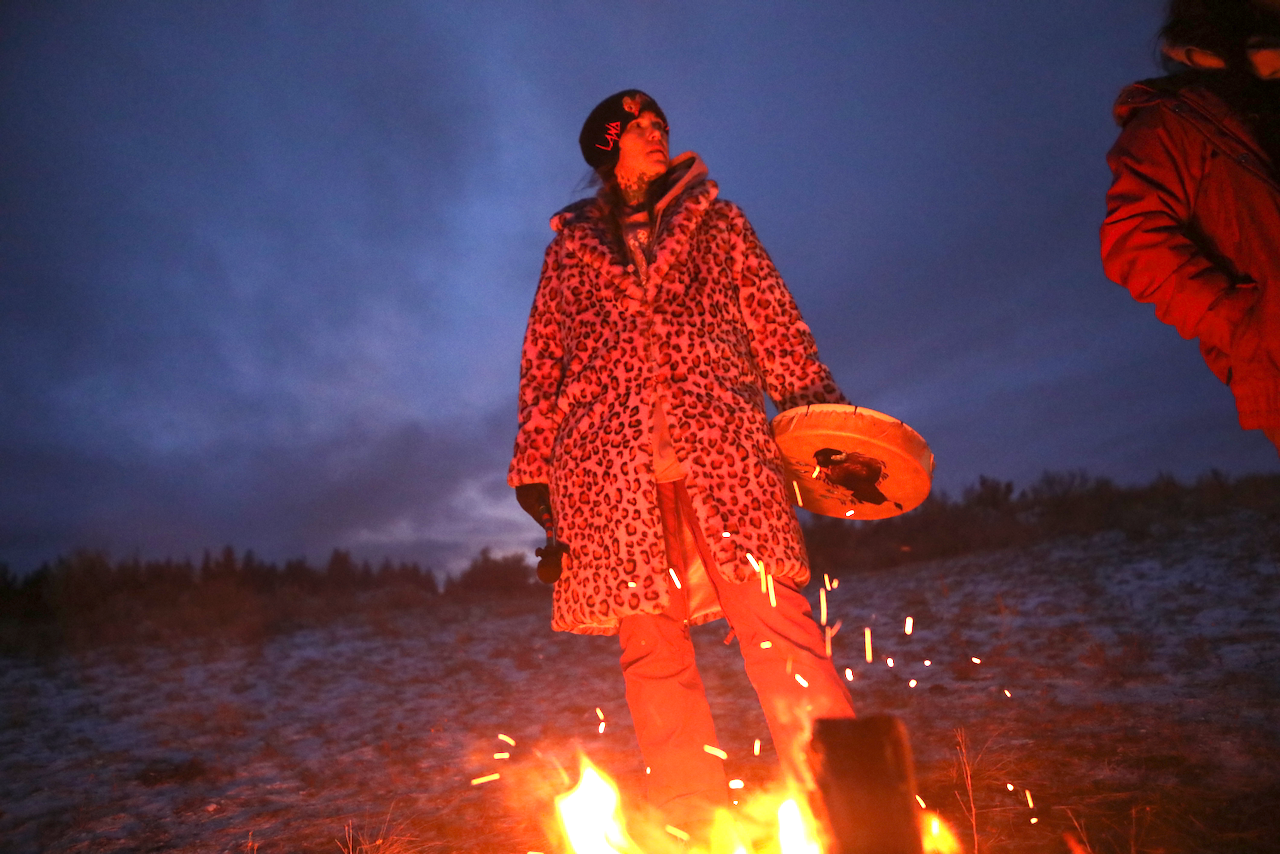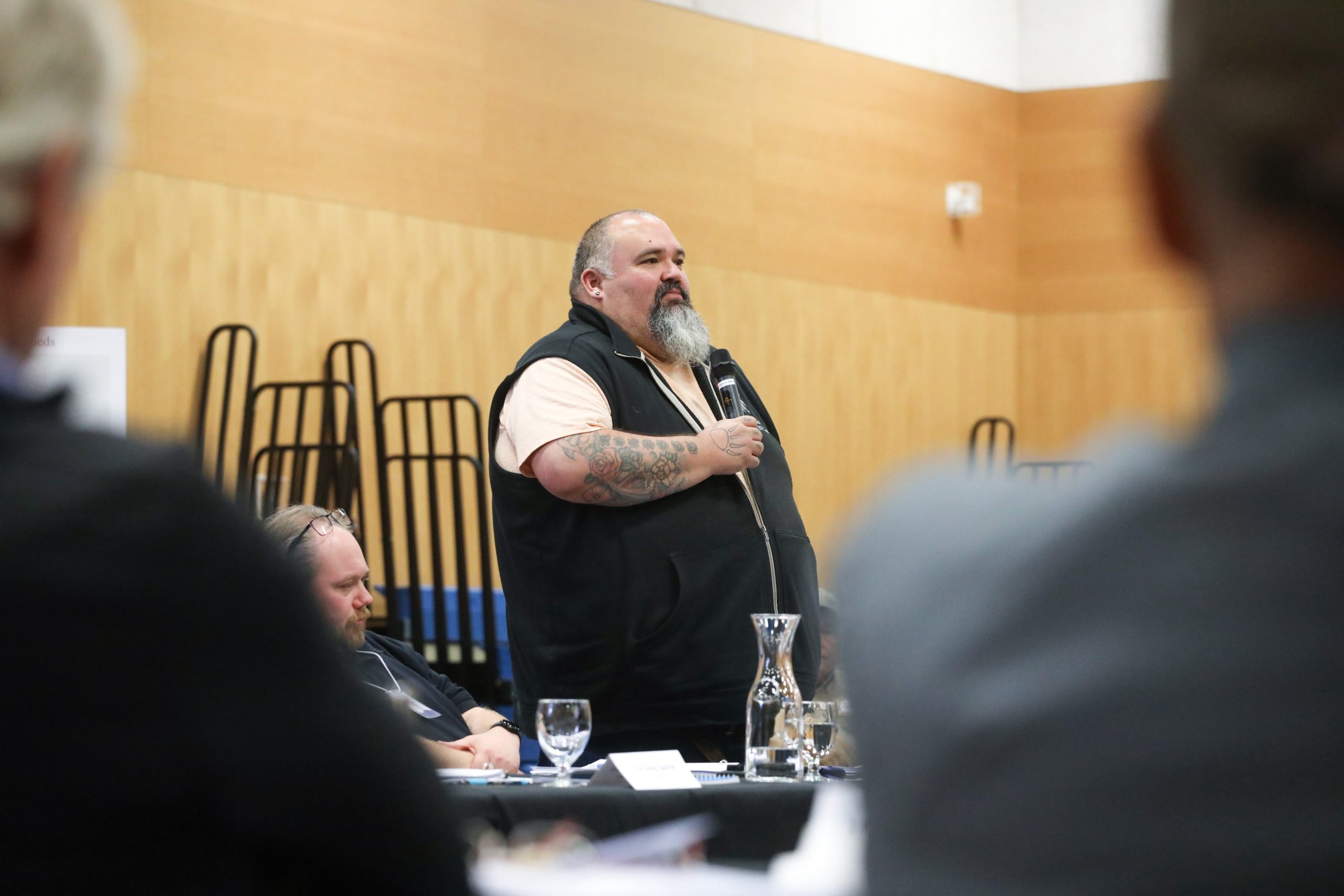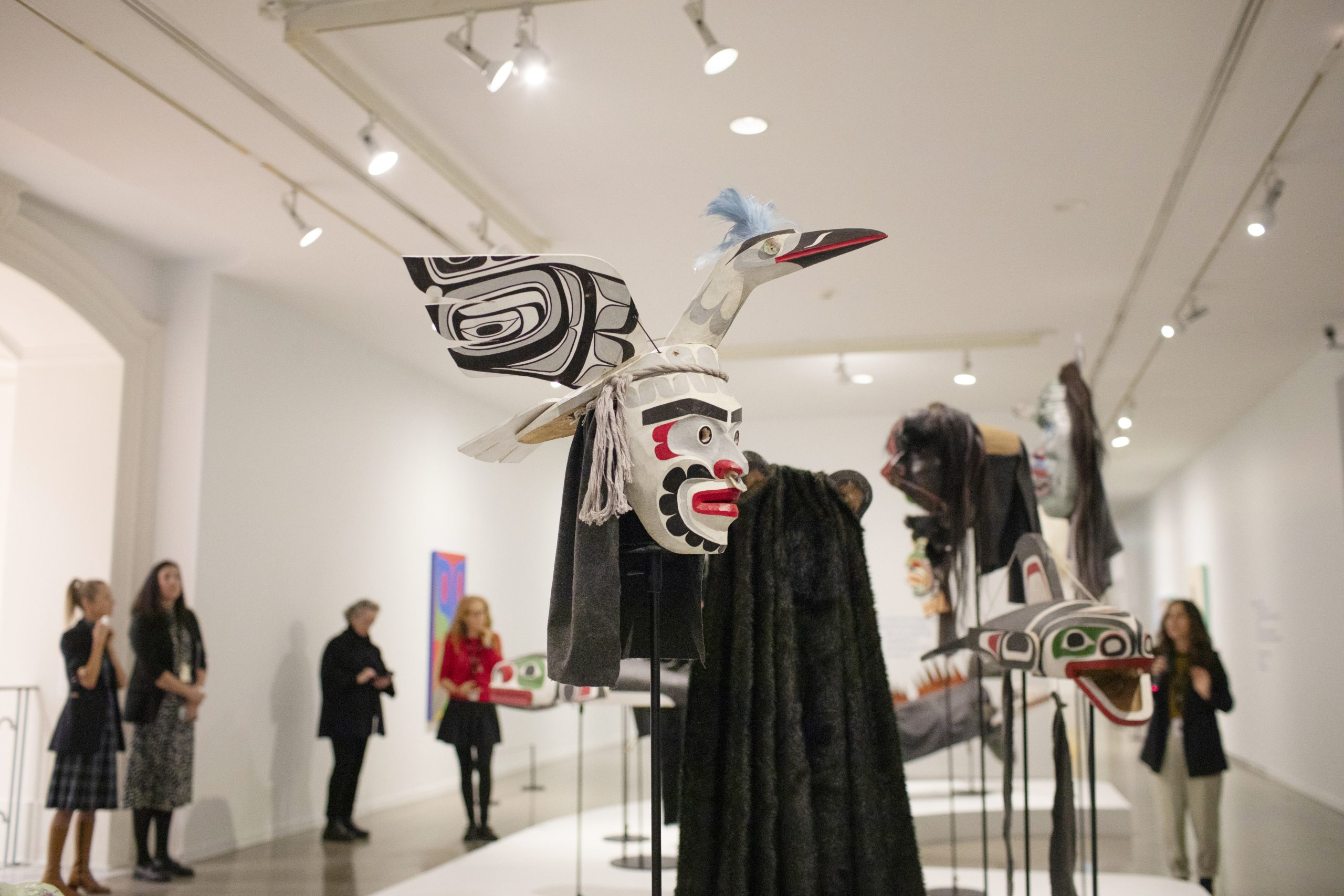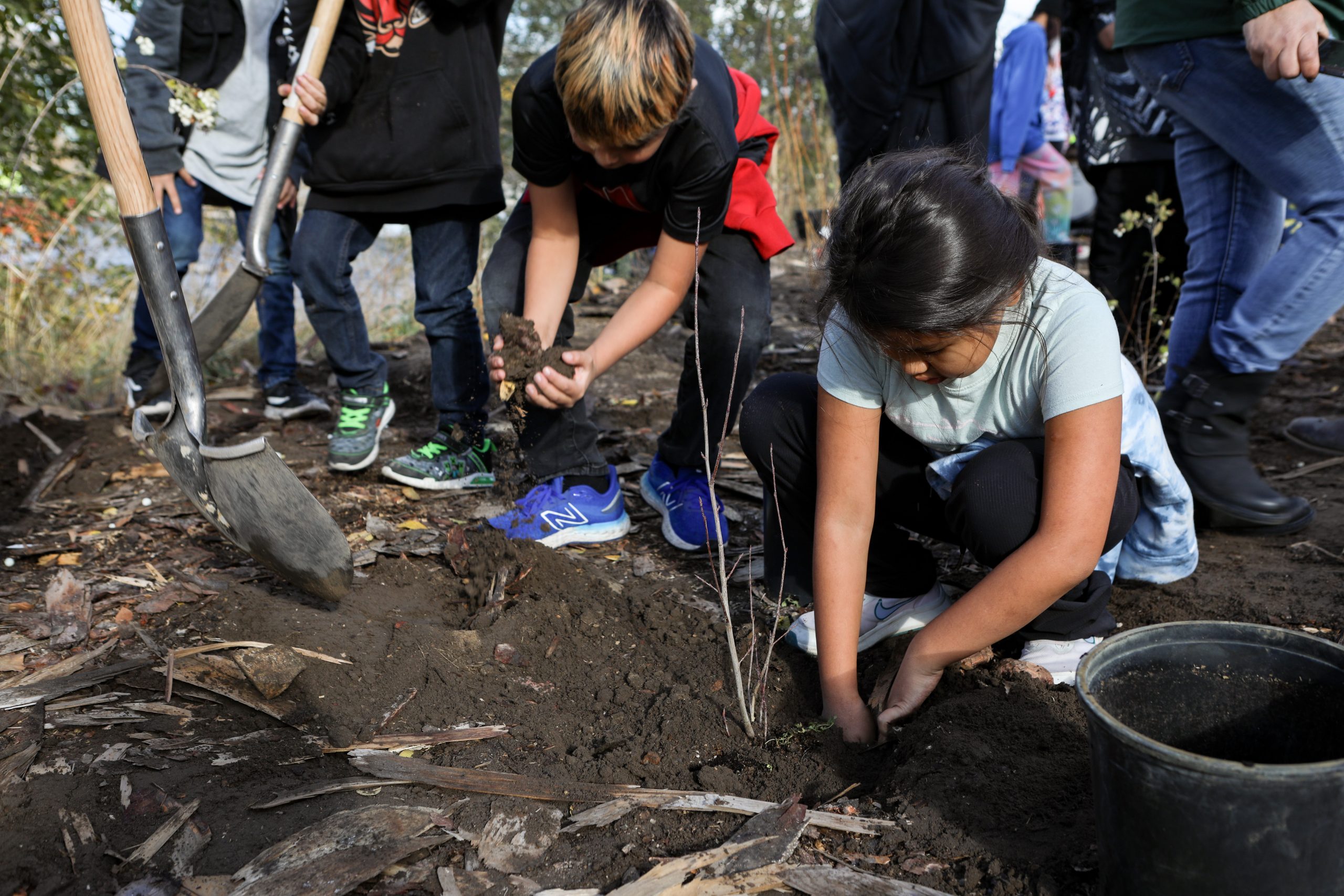How smúkʷaʔxn Marchand’s journey into womanhood is uplifted by Syilx ceremony
‘What training has taught me is that your community is there for you, and when you need help, you ask for it.’

My great-great-grandmother, Teresa Ashton, was a medicine woman who died at 105. She held winter dances in her lodge, where Syilx people would come together to set prayers for the year and see to important matters concerning the people.
Her granddaughter, my grandmother, had my mother at the young age of 16, and has since tragically passed. I never had the chance to meet her.
When my grandmother gave birth to my mother she was taken from the hospital, in what is now known as the Sixties Scoop. The term refers to the large-scale removal of Indigenous babies from their families and homes through the 1960s (and beyond) and “their subsequent adoption into predominantly non-Indigenous, middle-class families across the United States and Canada,” as documented in The Canadian Encyclopedia by Niigaanwewidam James Sinclair and Sharon Dainard.
As a child, my mother had no secure foundation, and this led to her having a difficult journey as a parent raising me and my sisters. She eventually left when I was 11 and about to start my own journey into womanhood. From that point on, my father raised me with the support of my paternal grandmothers.
This is a continuation of that story — a story of how my daughter, smúkʷaʔxn (pronounced Smu-awk-in), is healing our family lineage through the reclamation of ceremony, womanhood, and being raised by what we call “the village.”
When smúkʷaʔxn came to the world
It was March 20, 2006 and my aunty Sandie Derrickson, who I call my second mother because she carried on caring for me and my sisters after my mother left, stood by my side the entire time I was in labour, a 12-hour ceremony.
That evening at 9:12 p.m., smúkʷaʔxn came into the world.
“My name is smúkʷaʔxn, and I got the name from my great-great-grandmother Millie Steele, [from Colville] because I was born on the first day of spring,” says smúkʷaʔxn as we sit in our living room after smudging and praying together.
“The flower represents spring and beauty.”
After Smúkʷaʔxn was born, she was raised by her village — her aunty Gloria Alexis, uncle Paul Alexis and their seven daughters, Smúkʷaʔxn’s sister-cousins.
She was raised by the family until she was five, and then she came home to live with me.
While she was being brought up by the Alexis family, they taught her many things about how to discipline herself by staying alongside the women as they worked doing traditional gathering, making baskets, sewing, and more.
She learned some of her nsyilxcən language and songs, and she was instilled with a sense of understanding about who she was to become.
I ask my daughter who raised her.
“You, my mother, all my aunties, my papa, my grandmothers, my sisters, my uncles. It makes me responsible to a bigger community,” smúkʷaʔxn responds.
“Any big change I want to make in life it needs to be of benefit to not just myself but my community.”
smúkʷaʔxn’s journey to womanhood
smúkʷaʔxn began her journey into womanhood at 13, which is a time for a young Syilx to enter into the Syilx ceremony training, a rite of passage into adulthood.
“When you get your first moon time, or for boys when your voice cracks,” smúkʷaʔxn explains.
“There is a lot of protocol to follow when you’re transitioning from a child to an adult, so you’re really disciplining your mind and your body, so that means sometimes you are going to the creek for a dip or running the mountainside.”
Smúkʷaʔxn entered the ceremony at the will of the family, which meant we were all responsible for ensuring the process was completed.
During my daughter’s year of training, watching her reclaim old practices healed in some way, the woman in me — knowing she was reclaiming a practice the women in our family have done in the very same waters.
Tricia Manuel, from the Upper Nicola Band, was smúkʷaʔxn’s training guide. She guided the swínumtax (the beautiful ones) through their ceremonial process. As parents we supported while going through our own transformational process of learning to let our children go and allowing them to take up the responsibilities of becoming an adult.
“Once a person has given birth, then it becomes every person’s responsibility to take care of that child,” smúkʷaʔxn says.
“I have seen that especially through my own training becoming a woman. Everyone came to help me and love me through it.”
It was through a traumatic experience that happened during her training that smúkʷaʔxn says the teachings from her aunty Tricia really saved her.
After the event, she remembers beginning to skip school. She started disrespecting her family and getting herself into dangerous situations, and then her village stepped in.
“[I was] going down the wrong path, so my aunty [Tricia] came to get me and took me, so she could help me connect back to myself,” she says.
“Connecting and healing.”
“Through that traumatic experience, I also learned from my aunties, a traditional way to take care of my grief, so that I don’t invite bad things to happen by continuing to be angry,” she says.
After she completed her ceremony training she says she felt a shift.
“I truly felt like I was an adult. I even cried because it was such a big change in who I was,” she says.
Stepping into the world as a woman of the people
“I’ve really become an aunty, and understand how to care for children and discipline them with love, in the traditional way.
“For me, it was learning how to care for the children and care for people, so if anyone needs help, I am to step up and do that as a younger woman,” she says.
“It’s especially important to help people through times of grief.”
Now, still in her own process of grief over her traumatic experience, she says it’s through her ceremony and the teachings of her aunty Tricia that she is able to cope, and has learned that part of being an adult is asking for help.
“What training has taught me is that your community is there for you, and when you need help, you ask for it,” she says. “My aunty taught me that these women are here to help you in life — always.”
To continue her healing, smúkʷaʔxn is accessing counselling through the mental health and wellness team in her community of the Okanagan Indian Band, which she asked for on her own accord. She also continues to take her ceremonial and cultural learning seriously.
My daughter and I both hope that more and more youth will find the courage to ask for help when they need it, to see the strength in their vulnerability.
“[It’s important] to honour your wellness, because you are important to the people,” smúkʷaʔxn says.
Author
Latest Stories
-
‘Bring her home’: How Buffalo Woman was identified as Ashlee Shingoose
The Anishininew mother as been missing since 2022 — now, her family is one step closer to bringing her home as the Province of Manitoba vows to search for her
-
Will you help us tend to the fire?
IndigiNews is launching a fundraising campaign to support our storytelling into 2026












